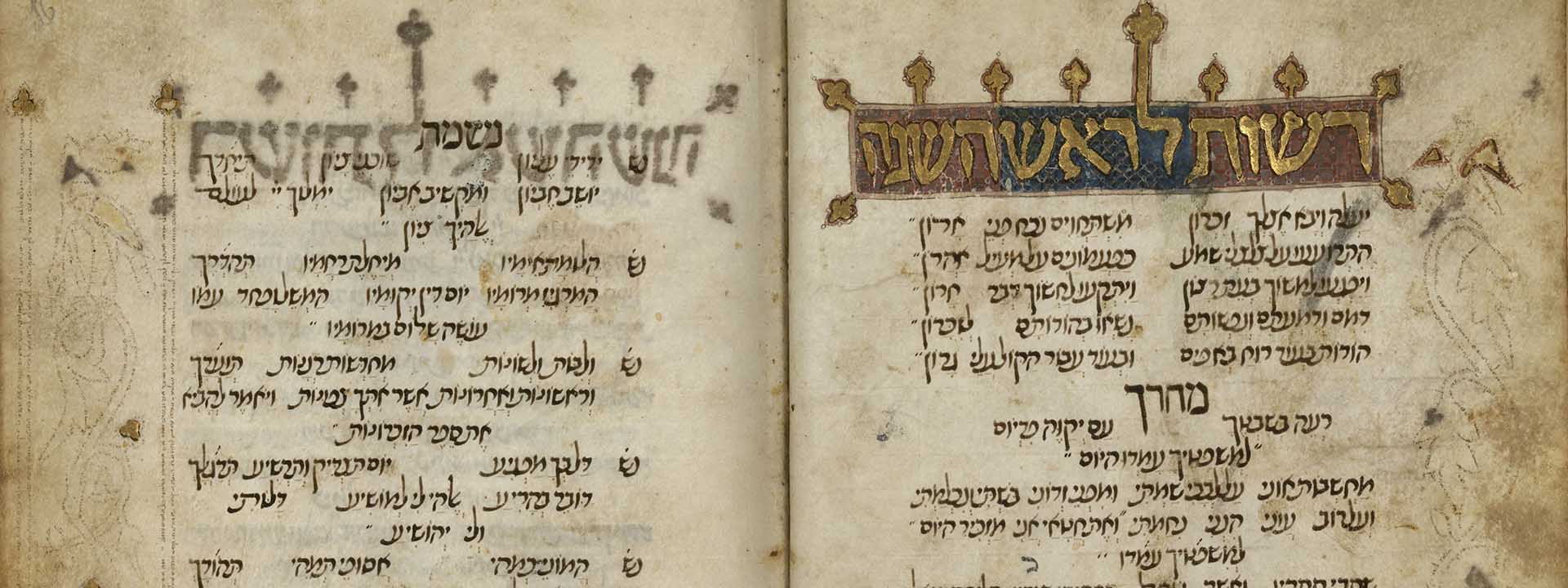Description
Mahzor for Rosh Hashana and Yom Kippur according to the Catalonian Rite
Manuscript. Catalonia, Spain, ca. 1280. Parchment. 154 fols., 195x155 mm. Sephardi semi-cursive script with vocalization. Incipits in Sephardi square script.
The manuscript is ornamented with micrographic drawings and incipit panels with letters in gold against a background in purple and blue. The finials of the letter "lamed" are in the form of foliage and birds. The first seven leaves are full-page micrographic panels, depicting hunting scenes, candelabrum and the vessels of the Temple, all from Psalms and "David's Last Words" (II Samuel: 23). Micrographic decorations are, as a rule, not found in prayer books.
The text includes liturgical hymns by great Spanish Jewish poets such as Shlomo ibn Gabirol, Judah Halevi, and Moses ibn Ezra, and Maimonides. Most of these piyyutim conform to the rites of prayer preserved by Jewish communities in the city of Barcelona or the region of Catalonia; some conform to the rite prevalent in the Kingdom of Aragon, which ruled Barcelona and Catalonia before the unification of Spain.
At the beginning of the 20th century the manuscript was found in the library of the Hochschule für die Wissenschaft des Judentums, a research center and rabbinical seminary founded in Berlin in 1872 and destroyed by the Nazis in 1942. It went missing during WWII and reappeared in a 1984 public auction. Thanks to the intervention and generosity of Ludwig and Erika Jesselson the manuscript was purchased and donated to the National Library in 1986.



